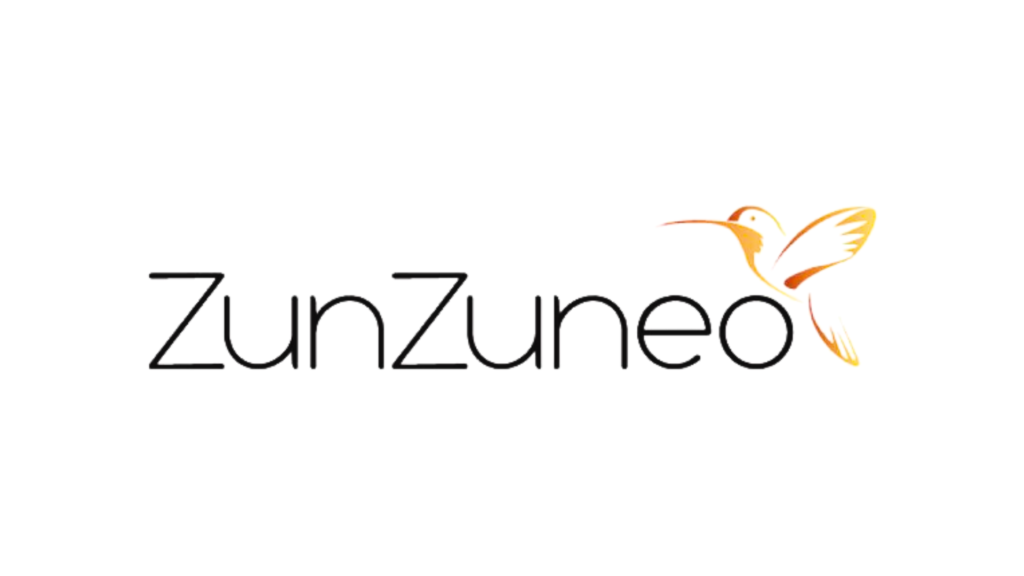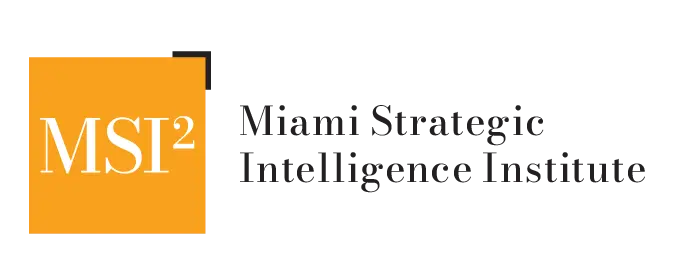17 Apr Beyond 140 Characters: ZunZuneo, USAID, and the Future of Digital Activism in Cuba
By,
Luis Noguerol, Senior Fellow, MSI²
Between 2009 and 2012, the United States Agency for International Development (USAID) launched ZunZuneo, a covert SMS-based social media platform known as “Cuban Twitter,” designed to circumvent Cuba’s information blockade and foster open communication among Cuban citizens. The project aimed to empower civil society and potentially encourage political dissent by providing free, uncensored information via mobile text messaging in a country with limited internet access.
USAID concealed its involvement through shell companies and third-party contractors, initially focusing on non-political content to build user trust before planning to introduce politically charged messaging. Despite attracting up to 60,000 users at its peak, ZunZuneo faced criticism for its lack of transparency, ethical concerns over data collection and recruitment tactics, and its alignment with intelligence operations rather than humanitarian aid. The platform ultimately failed due to funding shortfalls and increased scrutiny from Cuban authorities, but it remains a significant case study in the complexities and ethical dilemmas of using technology for political influence in restrictive environments. ZunZuneo’s legacy underscores the ongoing challenges of promoting democracy abroad, highlighting the need for transparency, sustainability, and sensitivity to local contexts in future initiatives.
Introduction
Between 2009 and 2012, the United States Agency for International Development (USAID) launched a social media platform called ZunZuneo, aimed at fostering communication among Cubans and circumventing the Cuban government’s strict censorship. Dubbed “Cuban Twitter,” ZunZuneo was designed to provide a free flow of information, empower civil society, and potentially encourage political dissent. While USAID defended the program as a development initiative, critics labeled it as a covert operation intended to destabilize Cuba’s communist regime. This article explores the origins, objectives, execution, and controversies surrounding ZunZuneo.
The ZunZuneo project emerged as part of broader U.S. efforts to promote democracy in Cuba. Funded by a three-year grant totaling approximately $1.2 million, the program aimed to:
- Break Cuba’s “Information Blockade”: Provide Cubans with access to uncensored information through mobile text messaging.
- Empower Civil Society: Encourage community engagement and independent communication networks.
- Foster Political Change: Build a platform that could later be used to disseminate messages encouraging dissent against the Cuban government.

The name “ZunZuneo,” derived from Cuban slang for the sound of a hummingbird’s tweet, symbolized the project’s goal of creating a lightweight, accessible communication tool for everyday Cubans.
It was conceived to operate like Twitter, allowing users to send 140-character messages free of charge. At its peak, it attracted tens of thousands of subscribers in Cuba, where internet access was limited but mobile phones were increasingly common. USAID worked discreetly to ensure the service’s success through
- Shell Companies: The agency concealed its involvement by routing funds through third-party organizations and shell companies based in other countries.
- Content Strategy: Initially, ZunZuneo focused on non-political content like sports scores, trivia, and weather updates to build trust and attract users.
- Expansion Plans: USAID envisioned using the platform to later push messages encouraging political activism and dissent.
Despite these efforts, ZunZuneo ran out of funding in 2012 and ceased operations abruptly due to some controversies. The program faced significant criticism for its perceived covert nature and lack of transparency, but a topic that was never clear was if it was really about covert or developmental?
USAID maintained that ZunZuneo was a development initiative consistent with U.S. law and reviewed by the Government Accountability Office (GAO), but critics argued that its methods – such as concealing funding sources, aligned more closely with intelligence operations than humanitarian aid.
Impact on U.S.-Cuba Relations
The Cuban government viewed ZunZuneo as an attempt to undermine its authority, exacerbating tensions between Havana and Washington during an already fraught period. Experts like Marc Hanson from WOLA criticized the program as “wasteful” and counterproductive to improving U.S.-Cuba relations.
On the other end, there were some ethical concerns like allegations arose that USAID used unrelated programs (e.g., HIV prevention workshops) as fronts for recruiting young Cubans into anti-government activism. These tactics raised questions about the credibility of U.S.-funded humanitarian initiatives worldwide, and ended by jeopardizing the project.
Program Design and Execution
The program was part of USAID’s broader Cuban Civil Society Support Program initiated in 2008. The goals included:
- Creating alternative means of mass communication.
- Cultivating social leadership.
- Strengthening nascent social groups and networks.
USAID awarded 12 grants totaling $1.7 million to organizations like Mobile Accord Inc. (Denver) and NiteMedia SA (Nicaragua) to implement ZunZuneo. The platform relied on a database of 500,000 Cuban cell phone numbers obtained from informal markets in Cuba. While initially successful in attracting users, ZunZuneo failed to achieve its long-term goals due to funding constraints.
Although ZunZuneo ultimately failed due to funding restrictions, it highlighted key challenges in using technology for political changes like
- Transparency vs. Discretion: Programs like ZunZuneo risk undermining legitimate humanitarian efforts when perceived as covert operations.
- Sustainability: Long-term success requires consistent funding and local buy-in, which ZunZuneo lacked.
- Balancing Objectives: While fostering free communication is noble, linking such efforts to regime change can backfire diplomatically.
Platform Design
ZunZuneo was primarily an SMS-based social network, leveraging Cuba’s mobile telecommunications infrastructure (Cubacel) to send mass text messages. The platform allowed users to send and receive messages free of charge, which was significant given the high cost of texting in Cuba (average wages were $20/month). It operated as a lightweight version of Twitter, enabling users to share short messages (140 characters) and interact anonymously.
Infrastructure
- Servers: Initially, USAID considered hosting servers in Spain but opted for Amazon Cloud servers based in Ireland due to cost concerns.
- Subcontracting: Mobile Accord and Creative Associates International managed the technical implementation. MovilChat, a shell company registered in the Cayman Islands, was created to distance USAID from direct involvement.
- SMS Routing: Text messages were routed through third-party providers like Lleida.net (Spain), which offered scalable SMS communication.
Data Collection
ZunZuneo built a database of approximately 500,000 Cuban cell phone numbers acquired from the informal market. Demographic data such as age, gender, and political tendencies were collected voluntarily through website registrations or customer support calls. This data facilitated microtargeting for future political messaging, which is not much different from the way social media operates nowadays, specially because the use of Artificial Intelligence, but the differentiator here is that it happened 13 years ago before current technologies were widely used.
Operational Mechanisms
From the content strategy standpoint and to attract users without raising suspicion, ZunZuneo initially focused on non-political content like sports scores, music updates, trivia, and weather alerts. Once the user base grew significantly, USAID planned to introduce political content aimed at encouraging dissent against the Cuban government through “smart mobs”.
By February 2010, ZunZuneo launched in Cuba and quickly gained traction. Within six months, it had approximately 25,000 subscribers and eventually reached around 60,000 users at its peak. The platform’s popularity exploded due to its novelty and free messaging service. Users formed groups and interacted anonymously, creating a sense of community outside government control. It was working as initially conceived but defunding the project trashed the progress.
When it comes to anonymity and privacy ZunZuneo implemented basic security measures like website login credentials and privacy policies posted under “Terms of Use”. Despite these efforts, concerns arose about the potential misuse of collected demographic data for political purposes.
Strategic Planning (Covert Operations)
USAID concealed its involvement by funding ZunZuneo through front companies like MovilChat and routing payments via Cayman Islands bank accounts. Contractors were instructed to avoid direct links to the U.S. government to minimize detection by Cuban authorities; and developers aimed to achieve critical mass by making the platform indispensable for Cubans while ensuring Cubacel became reliant on revenue from text messages, however, legal issues related to paying Cubacel directly conflicted with U.S. law, complicating operations.
Expansion Goals
USAID envisioned ZunZuneo evolving into a multifaceted communication system with text messaging, email newsletters, Facebook-like features, and more. The Department of State reportedly approached Twitter co-founder Jack Dorsey to lead the project but failed to secure his involvement.
Technical Challenges and Failure
Funding Issues: ZunZuneo relied entirely on USAID funding but failed to establish a self-sustaining revenue model. By 2012, funding dried up, leading to its abrupt shutdown.
Simultaneously, the Cuban government began blocking ZunZuneo’s operations once it suspected foreign involvement. This reduced the platform’s effectiveness over time and increased the operational risks. Developers feared exposure of U.S. involvement would lead to immediate shutdowns by Cuban authorities. Efforts to obscure funding sources added complexity but did not prevent eventual discovery.
Legacy
Despite its failure, ZunZuneo remains a case study in using technology for political influence in restricted environments. It demonstrated how SMS-based platforms could bypass internet limitations in countries with low connectivity. The program highlighted ethical concerns about blending humanitarian aid with covert operations, and lessons from ZunZuneo influenced future U.S.-funded initiatives aimed at promoting democracy abroad. So, why talking about ZunZuneo in 2025? Because the Cuban people’s need still as relevant as years back.
Conclusion
In hindsight, ZunZuneo serves as a cautionary tale about the complexities of promoting democracy in non-permissive environments, without considering that the Cuban regime does not respect or reciprocate US efforts.
In other words, ZunZuneo was an ambitious yet controversial attempt by USAID to empower Cubans through technology while navigating the challenges of operating in a hostile environment. While its intentions may have been noble to foster free communication, it ultimately failed due to financial constraints, ethical concerns, and diplomatic fallout. As governments continue exploring technological tools for promoting democracy worldwide, ZunZuneo underscores the importance of transparency, sustainability, and respect for local contexts. Combining the legacy and lessons of ZunZuneo with current efforts to promote Cuban access to world news highlights both the persistent challenges and the evolving technological landscape in Cuba.
References
Associated Press. (2014, April 3). U.S. secretly built ‘Cuban Twitter’ to stir unrest. AP News. https://apnews.com/article/technology-north-america-ap-top-news-cuba-caribbean-7ddda8a8c24b4b089b170a6e4b8cb5c3
Meyer, J. (2014, April 3). ZunZuneo: U.S. secretly created ‘Cuban Twitter’ to stir unrest. The Washington Post. https://www.washingtonpost.com/world/national-security/us-secretly-created-cuban-twitter-to-stir-unrest/2014/04/03/0e8d2b64-bb0a-11e3-96ae-f2c36d2b1245_story.html
Office of Inspector General, U.S. Agency for International Development. (2015, December 22). Review of USAID’s Cuban Civil Society Support Program (Report No. 9-000-16-001-S). Washington, D.C.: USAID. https://oig.usaid.gov/sites/default/files/2018-06/9-000-16-001-s.pdf
Sullivan, M. P. (2014, April 8). Cuba’s “ZunZuneo” and U.S. Democracy Promotion Programs. Congressional Research Service. https://sgp.fas.org/crs/row/R43535.pdf
USAID. (2014, April 8). Statement from USAID on “Cuban Twitter”. United States Agency for International Development. https://2012-2017.usaid.gov/news-information/press-releases/apr-8-2014-statement-usaid-cuban-twitter
Note: Special thanks to the relentless warrior Casey Fleming of BlackOps Partners, whose thought-provoking question about the Obama Administration’s role in this program sparked the investigation. Fleming is a columnist for The Epoch Times and a contributor to NTD News.
